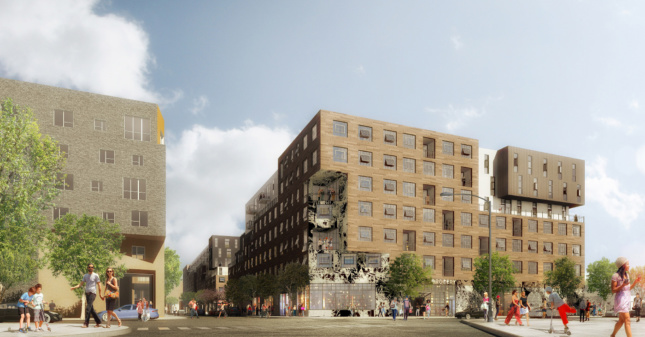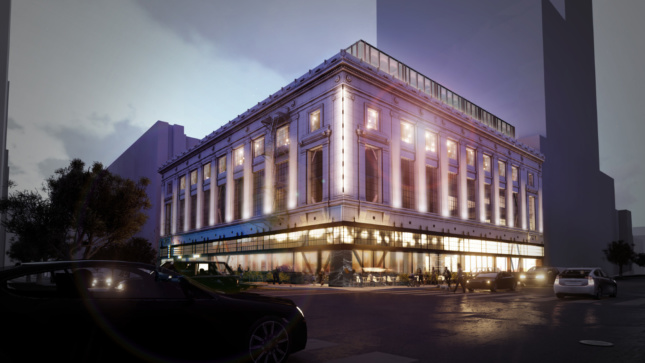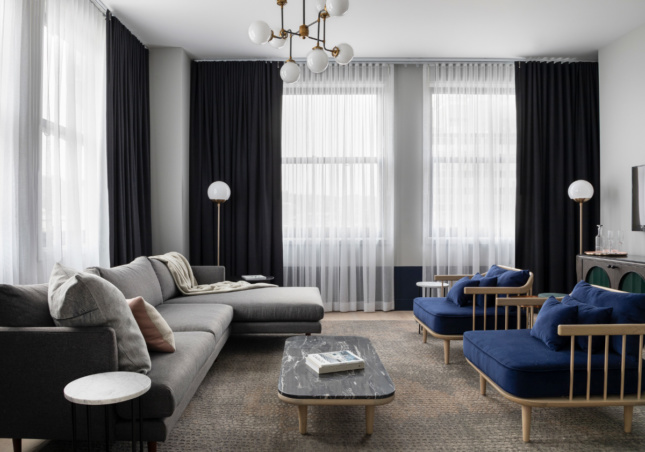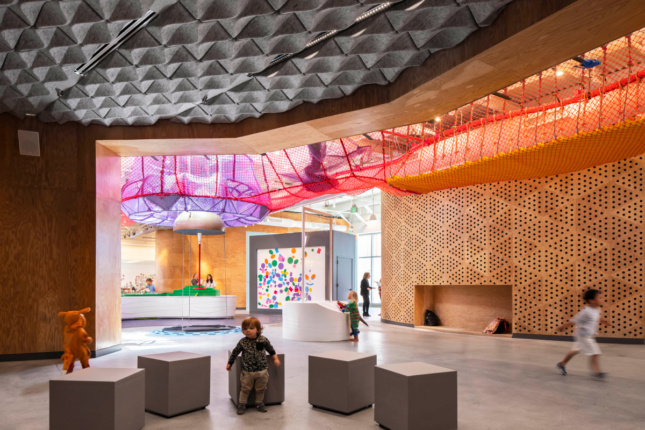When an artist titles a piece, a series, or a body of work Untitled, it may appear to the viewer as an abdication of responsibility, or blatant indecision designed to confuse the viewer. And yet, more often than not, the decision is made to establish a shared experience of open-endedness and subjectivity between the artist and viewer. The decision to avoid a title can potentially liberate any work from belonging to a single movement, choosing instead to reflect ageless human conditions and the ever-changing qualities of how we perceive the world around us.
Such was the decision behind the naming of OFFICEUNTITLED, the Los Angeles-based architecture firm with an extensive range of projects behind them in their young career. The firm’s four principals—Shawn Gehle, Benjamin Anderson, Lindsay Green and Christian Robert—met while working at Gensler and first established an office together in 2013 under the name R&A Architecture and Design. Changing their name in 2019 to reflect the undefined nature of their practice, OFFICEUNTITLED currently has a handful of exemplary work behind them and a wealth of projects set to be completed in the near future.
AVA LA Arts District

Developed as a “base camp” for the creative community in Downtown Los Angeles, AVA LA Arts District is a seven-story complex broken up by multiple courtyards conceived as impromptu workspaces. The project will be up to seven stories in some parts of the 3.75-acre property and will contain approximately 475 live/work units.
The overall plan was designed in recognition of the adjacent light rail station that is set to be completed within the next few years. “AVA opens up to this context and the new urban fabric at ground level,” the firm wrote, “while reinterpreting the horizontality of Los Angeles through its form.” The exteriors were designed in a nod to the large, turn-of-the-century industrial buildings found in the area, while its interiors are minimally designed with board-formed concrete and fiber cement paneling. When completed in 2023, AVA LA will be neighbors of several significant developments, including a mixed-use project designed by Bjarke Ingels Group and Michael Maltzan Architects’ Sixth Street Viaduct.
9th & Hil

OFFICEUNTITLED’s adaptive reuse of the May Company Parking Garage in Downtown Los Angeles, one of the first purpose-built parking structures in the United States when it was completed in 1926, will maintain much of the character of the structure while adding mixed-use programming and a penthouse in the form of a pristine glass box.
The upper two floors of the 400-car structure will be transformed into creative office space, while the ground floor will become a grocery market with exposed Beaux-Arts detailing throughout. The project, set to be completed in 2021, will require extensive renovation of its iconic facade, for which it was designated a Los Angeles Historic-Cultural Monument in 2011.
Woodlark

Completed in 2018, Woodlark is a hotel in Portland, Oregon, developed as an adaptive reuse of the historic Woodlark Building and adjacent Cornelius Hotel into a single, continuous building. To develop the aesthetic for the 150-room hotel, the firm brought the opulence and ornate design of the two structures into the 20th century through the use of “subtle, soft, and elegant” detailing while renovating the exterior facades in their entirety. A penthouse and stair tower penetrate the roofline of the tower half of the hotel while still maintaining the site’s French Renaissance style and iconic rooflines.
The design of the hotel’s interiors is a nod to the verdant landscapes unique to the Pacific Northwest, down to the ‘mossy’ velvet and natural wood tones throughout the ground floor, restaurant and lounge bar. Through a reimagining of the two buildings’ interiors as one, OFFICEUNTITLED achieves a balance between vernacular and indigenous aesthetics in the middle of downtown Portland.

Set within the upper floor of Santa Monica Place, OFFICEUNTITLED’s design for Cayton Children’s Museum is a free plan defined by playfully-scaled landmarks that allow visitors to determine paths through the 30+ exhibits on display. These objects are referred to according to their unique external appearances and textures, with names such as the Armadillo, Porcupine, Onion, Egg, and Drum. According to the firm, “these objects solve non-exhibit program requirements while [bearing in mind] that everything is a teachable moment in a children’s museum.”
The firm’s goal to use the objects to blur the relationship between architecture and exhibit is perhaps best demonstrated by the Courage Climber, a vibrantly-colored net structure hanging above over 20 percent of the museum’s total floor area. The installation allows children to unique navigate space through a novel method while offering views of other exhibits throughout the museum. “Made to inspire a sense of curiosity,” the firm explained, “the design is a contemporary space for exploration and adventure.” Completed June of this year, Cayton Children’s Museum sets a high standard for design for spaces intended for children.











